The basic physical principles of thermal mass flow meters can be traced back to the Canadian physicist Louis Vessot King, who described the heat transfer in the flow mathematically in 1914. This measurement principle can accurately measure a variety of gases and gas mixtures, even at low process pressures and low flow rates.
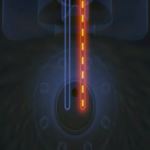 | There are two temperature sensors deep into the measuring tube in the thermal flowmeter which are Pt100 thermal resistances. One of the sensors measures the actual gas temperature as a reference value, independent of the flow rate; the second temperature sensor is always heated to maintain the preset temperature difference between the two sensors, such as 10 degrees Celsius. |
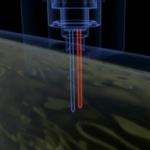 | If there is no gas flow, the temperature difference between the sensors will not change. |
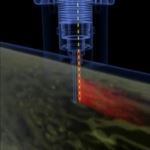 | And when the fluid starts to flow in the measuring tube, part of the heat energy on the heated sensor is taken away by the gas flowing through it, and the corresponding cooling effect is measured at the same time, and the lost heat is immediately compensated by adding more heating current. So as to maintain a constant temperature difference. |
 | The heating current required to maintain the constant temperature difference is proportional to the cooling effect of the corresponding gas, so that the mass flow in the tube can be directly measured. The higher the flow rate, the greater the additional cooling effect on the heated sensor, and the greater the heating current required. Using the same principle, the heating current can also be maintained at a constant value, and the flow rate can be measured by measuring the changing temperature difference. |
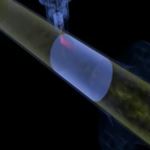 | But how is heat actually transferred from the heated sensor to the airflow flowing through it? The heat is transferred through the gas molecules themselves. When the airflow passes through, the gas molecules absorb tiny heat and take it away with the airflow. The faster the airflow, the faster the frequency of the molecules absorbing heat. |
 | Heat conduction also depends on the gas density, because at higher pressures and lower temperatures, there are more gas molecules in the pipeline, and a greater number of molecules will come into contact with the heated sensor, which means an increase in cooling and thus heating The current increases. |
 | Heat conduction is also affected by the thermal characteristics of the gas. For example, at the same mass flow rate, hydrogen with high thermal conductivity is displayed in green, resulting in a cooling effect that is 100 times greater than that of air. Therefore, in order to ensure accurate measurement, it is very important to determine the specific properties of the gas and maintain consistency. |
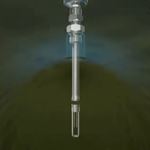 | The flow measurement of thermal principle can also be used for large pipelines, and there are special instrument models suitable for this kind of occasion. The instrument can be directly inserted into the pipeline through standard process connections. It is important to insert a certain depth in accordance with the installation requirements to ensure that the measurement is performed in the correct position. For this reason, it is very important to configure the pipe inner diameter parameters for the plug-in instrument. |
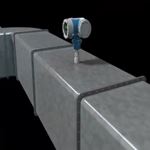 | In addition, the plug-in flowmeter is also suitable for rectangular or square pipes in the air circulation system of factories or buildings. |